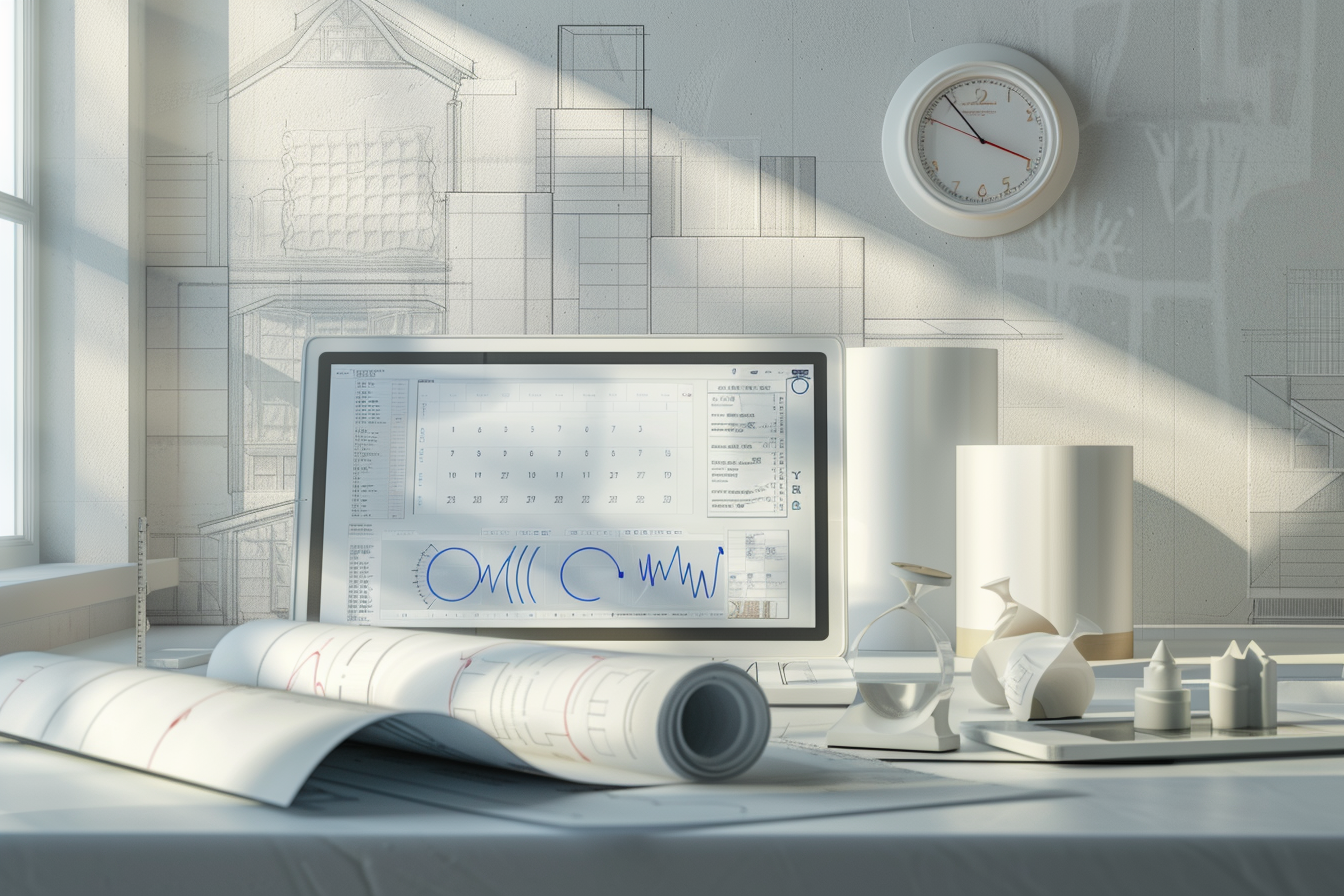Time and Resource Management

Introduction
Effective time and resource management is crucial in ensuring architectural projects are completed on schedule, within budget, and to the desired quality. For recent architecture graduates stepping into practice, understanding how to plan, allocate, and track time and resources can significantly impact their professional success. This article introduces the core principles of managing time and resources in architectural projects. It outlines how these are implemented throughout the project lifecycle, explores industry tools and standards, and highlights challenges and solutions. Readers will learn actionable methods to manage workload, coordinate teams, and ensure timely delivery.
Theoretical Foundation
Key Concepts:
- Time Management: Allocating time efficiently across project phases and tasks.
- Resource Management: Assigning people, tools, and materials based on availability and suitability.
- Critical Path Method (CPM): A technique to identify essential tasks that directly affect project completion time.
- Gantt Charts: Visual representations of project schedules.
- Work Breakdown Structure (WBS): Divides the project into manageable sections.
Time and resource management have evolved with technology. From hand-drafted calendars to real-time cloud-based scheduling tools, today’s practices stem from construction management theories that emerged in the 20th century and have been continuously refined.
Red Visual Aid Suggestion: Timeline diagram illustrating the evolution of time/resource management in architecture (from manual tracking to BIM-integrated platforms).
Practical Application
Applying Time and Resource Planning:
- Pre-Design Phase: Estimate time for site studies and conceptual design.
- Design Development: Allocate time for iterations, client approvals, and consultant coordination.
- Construction Documentation: Schedule detailed drafting, technical detailing, and review.
- Construction Administration: Track contractor schedules, inspections, and handovers.
Real-World Examples:
- The Edge, Amsterdam – Designed by PLP Architecture, this sustainable smart building used BIM-based scheduling to optimize design and reduce construction delays.
- Seattle Central Library by OMA – Used detailed programming and zoning to efficiently allocate spatial resources.
- Morpheus Hotel, Macau – Managed by Zaha Hadid Architects, this complex geometry required innovative time planning with parametric modeling.
Red Visual Aid Suggestion: Gantt chart mockup showing time allocation across project phases.
Pro Tip: Always build contingency time into schedules. Unexpected delays (e.g., permit issues or client revisions) are common.
Technical Considerations
Standards and Tools:
- ISO 21500 – Guidelines for project management in architecture.
- BIM 360 & Primavera P6 – Tools that assist with scheduling, budgeting, and coordination.
- Resource Leveling – Adjusts the schedule to account for limited resource availability.
Integration:
- Time/resource plans must align with cost estimations, code compliance checks, and consultant inputs.
Red Visual Aid Suggestion: Flowchart of how time and resource planning integrate with other project management components (e.g., budgeting, BIM coordination).
Pro Tip: Start resource planning alongside conceptual design to anticipate team and budget needs early.
Implementation GuideStep-by-Step:
Define Scope and Objectives
- Develop Work Breakdown Structure (WBS)
- Create Schedule with Milestones
- Assign Resources
- Monitor Progress Using KPIs (Key Performance Indicators)
- Adjust for Variations
Best Practices:
- Use color-coded Gantt charts for visual clarity.
- Integrate feedback loops for team updates.
- Conduct regular progress meetings.
Red Visual Aid Suggestion: Table comparing planning tools (e.g., MS Project, Asana, Trello, BIM 360) with use cases.
Pro Tip: Don’t over-schedule resources. Always leave margin for learning curves, sick leaves, or overlapping tasks.
Common Mistakes and Solutions
| Mistake | Solution |
| Over-ambitious timelines | Break down tasks realistically; benchmark similar projects |
| Ignoring dependencies | Use CPM to identify and track critical paths |
| Poor communication | Regular check-ins and shared calendars |
| Resource bottlenecks | Cross-train staff or stagger task allocations |
Red Visual Aid Suggestion: Infographic highlighting top 5 time/resource management mistakes with quick fixes. Pro Tip: Miscommunication causes the majority of time overruns—use centralized tools for updates.
Resources and ToolsSoftware:
Microsoft Project – Advanced scheduling and WBS creation
- Trello – Lightweight task tracking
- BIM 360 – Coordination and document control
- Asana – Ideal for collaborative design teams
Continued Learning:
- PMI (Project Management Institute) – Offers global certification
- RIBA Plan of Work – Defines architectural project stages
- AIA Handbook of Professional Practice
Red Visual Aid Suggestion: Logos/icons of top project management tools with brief notes on when to use them.
Pro Tip: Use cloud-based tools to allow real-time updates and access from multiple devices.
Conclusion
Understanding and mastering time and resource management transforms new graduates into competent professionals capable of leading complex architectural projects. With structured planning, clear communication, and the right tools, project delays and inefficiencies can be minimized. Integrating these skills early ensures smooth transitions from academia into real-world architectural practice.
Red Visual Aid Suggestion: Summary diagram of project lifecycle phases mapped against key time/resource planning activities.